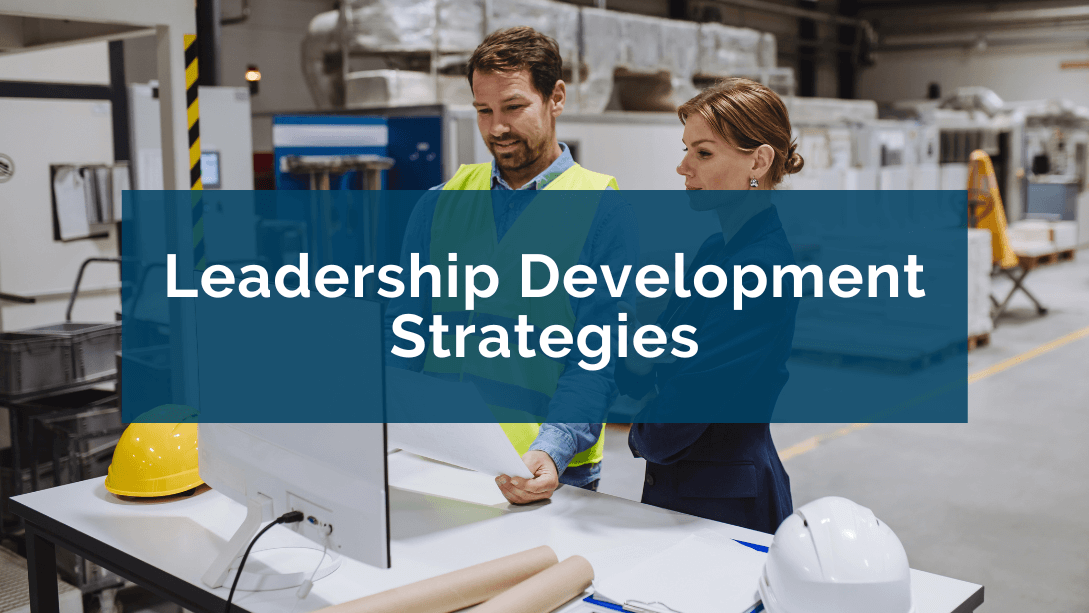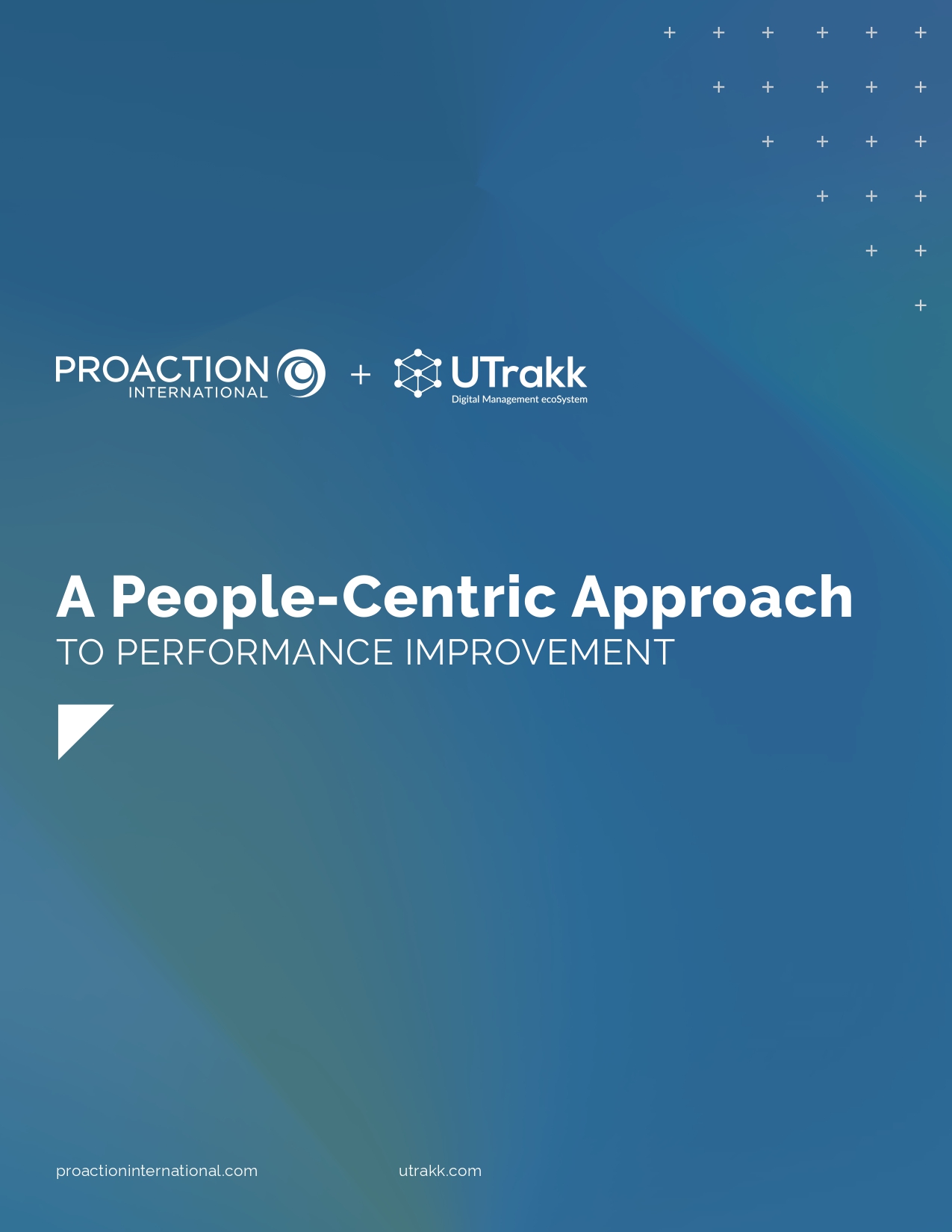What is a leadership development strategy?
It's a structured plan established by an organization to cultivate and strengthen the leadership skills of its people. More than just training individuals to manage teams, this development strategy provides them with the tools and experience they need to motivate and guide their colleagues while helping to achieve the company's ambitions.
Leadership is a skill that needs to be nurtured and refined through approaches tailored to each individual and the organization's specificities. An effective leadership development strategy combines several levers: formal learning, personalized coaching, and practical experience.
Leadership development is aimed at all those who have an influential role within the company, not just those in management positions:
- Executives and senior leaders: To strengthen their strategic capabilities and vision, optimize decision-making, and better manage change.
- Middle managers: To help them effectively coach their teams, improve communication, and fine-tune their operational leadership.
- Emerging talent: To prepare the next generation and ensure a smooth transfer of leadership skills.
Leadership is more than just a title; some employees play a key role in engaging and motivating teams. Those employees with no particular hierarchical position who wish to develop their leadership can also benefit from these strategies and acquire the soft skills needed to influence their environment better.
Benefits of an effective leadership development strategy
Fostering the emergence of strong leadership benefits employees and ensures business continuity, performance, and future success.
Benefits for companies:
- Efficient and faster decision-making
- Improved motivation and talent retention
- Increased performance and measurable results
- Culture of innovation and continuous improvement
- Humane and efficient management
- Greater resilience to change
Benefits for employees:
- Accelerated development of soft skills
- Faster career growth
- Increased ability to inspire and engage
- Balance between performance and well-being
- Increased recognition within the company
13 Leadership development strategies

1. Leadership and executive coaching
Executive coaching is individual, personalized support explicitly designed for leaders, senior executives, and managers. Unlike traditional training, which provides general knowledge, coaching is tailored to the leader's challenges.
The executive coach helps the coachee to step back, refine their vision, hone key leadership competencies, and improve leadership posture. The aim? To bring about a profound and lasting transformation.
Examples:
- A middle manager works with a coach to manage stress and hierarchical pressure.
- A director improves employee communication by learning to give inspiring and constructive feedback.
- A newly promoted manager benefits from coaching in establishing legitimacy and better leading their team members.
2. Professional training
This covers courses, certifications, and modules designed to enhance the skills of corporate leaders. Specialized organizations, schools, or firms can provide it.
Training offers a structured, validated, and recognized framework, enabling managers and leaders to develop key skills, obtain certifications, and improve progressively.
- Face-to-face courses in schools and universities
- Professional leadership certifications
- Short courses and specialized modules
- In-company training (customized)
Examples:
- An executive takes a business school's MBA in leadership and strategic management.
- An executive takes a two-day module on managing multicultural teams from a distance.
- A manufacturing company implements Lean leadership training for its production managers.
3. eLearning
This refers to all training courses accessible via digital platforms. This flexible strategy enables current and future leaders to learn at their own pace, without geographical or time constraints, while accessing expert content worldwide. Another advantage is that e-learning is often more affordable than face-to-face training.
- Massive Open Online Courses or MOOCs (often free or low-cost online courses)
- E-learning platforms (Learning Management System or LMS)
- Webinars and interactive masterclasses
- Micro-learning and specialized short modules
- Virtual reality and artificial intelligence for leadership training
Examples:
- A manager takes a MOOC on transformational leadership via HarvardX or Coursera.
- An executive attends a masterclass on agile leadership led by an influential CEO, with a Q&A session at the end.
- An executive-in-training follows an immersive virtual reality scenario in which they must manage a team in a crisis.
4. Mentoring
Mentoring is a coaching relationship between an experienced leader (the mentor) and a developing professional (the mentee). It involves the transmission of knowledge, the sharing of experience, and guidance in the mentee's professional and personal growth.
While executive coaching is structured, often paid, and delivered by a certified professional, mentoring is based more on a voluntary, informal relationship. The mentor helps their protégé avoid common mistakes, expand their network, and develop a more strategic vision of their leadership role.
- Traditional mentoring (an experienced leader accompanies a mentee)
- Reverse mentoring (a junior mentors an experienced leader)
- Group mentoring (one mentor accompanies several mentees)
- Informal mentoring (the mentee follows their mentor in their daily actions)
Examples:
- Senior leadership guides a junior manager by sharing team management and decision-making advice.
- A junior employee trains a senior manager in digital practices and the impact of social media.
- A company sets up manager groups where participants share their challenges and exchange advice with a senior mentor.
5. 360-degree feedback
360-degree feedback is an evaluation method in which a leader receives feedback from several sources (superiors, colleagues, subordinates, customers or external partners). Rather than a traditional top-down evaluation (from the hierarchy to the employee), this approach provides a global, objective view of the strengths and areas for improvement of the person receiving the feedback.
This strategy proves highly effective for leadership development, as it enables individuals to understand how their professional entourage perceives them and to adapt their attitude accordingly.
Examples:
- A company wishing to improve its managers' leadership skills completes a 360-degree assessment and then adapts its training program accordingly.
- A manager receives an anonymous evaluation report from their colleagues on their leadership style.
- A CEO implements a 360-degree feedback process every year to foster more transparent and collaborative leadership.
6. Immersive development experience
Ideal for in-depth, hands-on learning, these place leaders in interactive situations where they must directly apply their skills. This strategy focuses on experimentation, emotion, and active engagement. It allows participants to step out of their comfort zone, reflect on their role as leaders, and explore new ways of working.
Immersive experiences often boost self-confidence, improve decision-making under pressure, and develop finer relational intelligence. They can be short (a few hours) or long (several days) in individual or group formats.
- Interactive leadership workshops (collaborative sessions with practical exercises, role-playing, and case studies)
- Leadership retreats (immersion over several days, often outside the workplace)
- Leadership simulations in a controlled environment (realistic scenarios)
- Immersive games
- Reverse leadership experiments
Examples:
- Leaders must manage a fictitious but realistic scenario under pressure in a crisis decision-making workshop.
- A three-day seminar in the heart of nature, with coaching sessions, team-building activities, and time for strategic reflection.
- A frontline manager spends a day as an operator on a production line to better understand the challenges faced by their team.
7. Personal leadership development programs
Personal leadership development programs focus on self-reflection, self-awareness, and individual growth. They help business leaders and managers understand their leadership style, strengths, values, and areas for improvement so that they can improve.
These programs integrate introspective and experiential methods such as mindfulness, emotional intelligence, stress management, visualization, and leadership psychology.
- Self-assessment and personality tests
- Emotional intelligence development
- Leadership and mindfulness (meditation and mindfulness techniques applied to leadership)
- Personal leadership coaching and introspection
- Visualization techniques and vision anchoring
Examples:
- An executive takes an MBTI or DISC test to understand better how they function and interact with others.
- An executive participates in a meditation workshop to improve stress management and concentration.
- Leaders visualize their success and ideal posture in key situations (speaking, conflict management, decision-making).
8. Cross-functional project management
This strategy enables emerging leaders to develop by participating in cross-functional strategic projects. It involves collaboration between several departments, where participants must work on real company issues and find innovative solutions together.
Cross-functional project management is based on direct experience and skills applied in real-life situations. It fosters hands-on learning, encourages autonomy and responsibility, and gives participants a clearer idea of how the organization works.
- Participation in strategic cross-functional projects
- Rotation on inter-departmental projects
- Internal challenges and hackathons
- Continuous improvement projects (Lean, Six Sigma, Agile, etc.)
Examples:
- A project brings together HR, marketing, and finance managers to rethink the recruitment process by integrating artificial intelligence.
- Leaders must devise a plan to improve customer satisfaction during an internal hackathon in less than 48 hours.
- A group of managers work on a Lean project to reduce production waste in the factory.
9. Job rotation
Rather than confining the leader to a single department or mission, this strategy exposes him or her temporarily to different roles, departments, or responsibilities. This way, they can develop a cross-functional understanding of the company, gain versatility, and consolidate their skills.
This approach is often integrated into executive development, talent management, or succession planning programs.
- Cross-functional rotation (different departments)
- Vertical rotation (different hierarchical levels)
- Geographical rotation (experience in different subsidiaries, regions, or countries)
- Sector rotation (exposure to different professions within the same company)
Examples:
- A sales executive spends six months in the finance department to better understand budgetary issues.
- A plant manager takes charge of a project in another international subsidiary.
- An executive-in-training starts with a field assignment and then moves on to a supervisory position before moving to a strategic role.
10. New leader onboarding
Onboarding involves supporting new leaders during their first few months to facilitate their adaptation, accelerate upskilling, and maximize their impact immediately.
This process is generally based on a roadmap comprising three phases: 30, 60, and 90 days. This enables the leader to understand their role, the organization, and expectations gradually.
Integration is paramount because, when done well, it reduces stress, start-up errors, and the risk of failure while promoting rapid and effective leadership.
Examples:
- A 90-day induction plan with mentoring, training, and regular feedback.
- An internal integration guide, including clear objectives for the first few months.
11. Emerging leader program
Emerging leaders are often high-performing, motivated employees with strong development potential but who do not yet have formal leadership experience. The Emerging Leaders Program (ELP) aims to identify high-potential employees, train them, and accelerate their organizational progression. This enables them to acquire more rapidly the strategic, managerial, and operational skills needed to assume positions of responsibility shortly.
ELP combines theoretical learning with practical application. It can include several leadership development strategies (training, coaching, mentoring, job rotation, etc.).
Examples:
- Future leadership undergoes a one-year training program that includes mentoring, strategic projects, and continuous assessment.
- An employee spends three months in marketing, finance, and operations management before taking on a managerial position.
- An employee follows a transformational leadership training program with case studies and role-playing.
12. Micro-development opportunities
Micro-development opportunities are short, focused, and enriching experiences that enable aspiring leaders to develop flexibly and progressively. They offer a more agile and experimental approach, exposing participants to real-life situations where they must take initiative, influence, and engage resources.
While they are no substitute for an in-depth leadership development strategy, they are an exciting entry point, particularly for employees at the start of their career or in the transition phase to a leadership position.
- Volunteering for internal or external projects
- Networking and participation in professional events
- Involvement in strategic or cross-functional committees
- Management of short, specific projects
Examples:
- Employees take part in a corporate social responsibility initiative to hone their project management and team-building skills.
- A manager attends a conference on transformational leadership, exchanges ideas with industry experts, and discovers new managerial perspectives.
- An executive participates in a volunteer project to develop their leadership skills in a non-hierarchical context.
13. Collaborative leadership and co-development
There's a lot of talk about individual leadership growth, but many companies now focus on distributed leadership, where several employees take on responsibilities without a strict hierarchy.
This latter strategy is based on the idea that leadership is not built alone but in interaction with others. It implies a collective learning dynamic in which leaders share experiences, exchange ideas, and help each other solve everyday problems.
This approach is particularly well suited to changing work environments, where adaptability and cooperation are essential.
- Professional co-development groups (leaders meet regularly to exchange ideas and find solutions)
- Shared leadership and horizontal management
- Leadership circles and peer coaching (leaders meet regularly to exchange ideas, provide feedback, and help each other)
- Think tanks and internal innovation labs (where leaders collaborate on strategic projects or specific issues)
- Collective feedback and networked learning
Examples:
- A group of managers share their difficulties in managing change and collectively reflect on practical approaches.
- Department heads meet monthly to share best practices and challenge each other.
- A company sets up collective feedback sessions where each manager receives advice from colleagues on improving their leadership style.
Develop and elevate your leadership on the plant floor
One thing to remember about leadership development is that no strategy works in a vacuum. A leader isn't just built in a training room or through a structured program or one-off mentoring. It is the combination of these experiences, their practical application, and their adaptation to the realities of the floor that create a successful leadership development program.
There's no one-size-fits-all approach to becoming a good leader. Each person, each company, and each situation requires a tailored approach. Some people will thrive on experiential learning and cross-functional projects, while others will evolve through coaching, feedback, or job rotation.
What makes the difference is not the strategies chosen but the ability to anchor them in the company's day-to-day life and turn them into personal and organizational transformation instruments.









